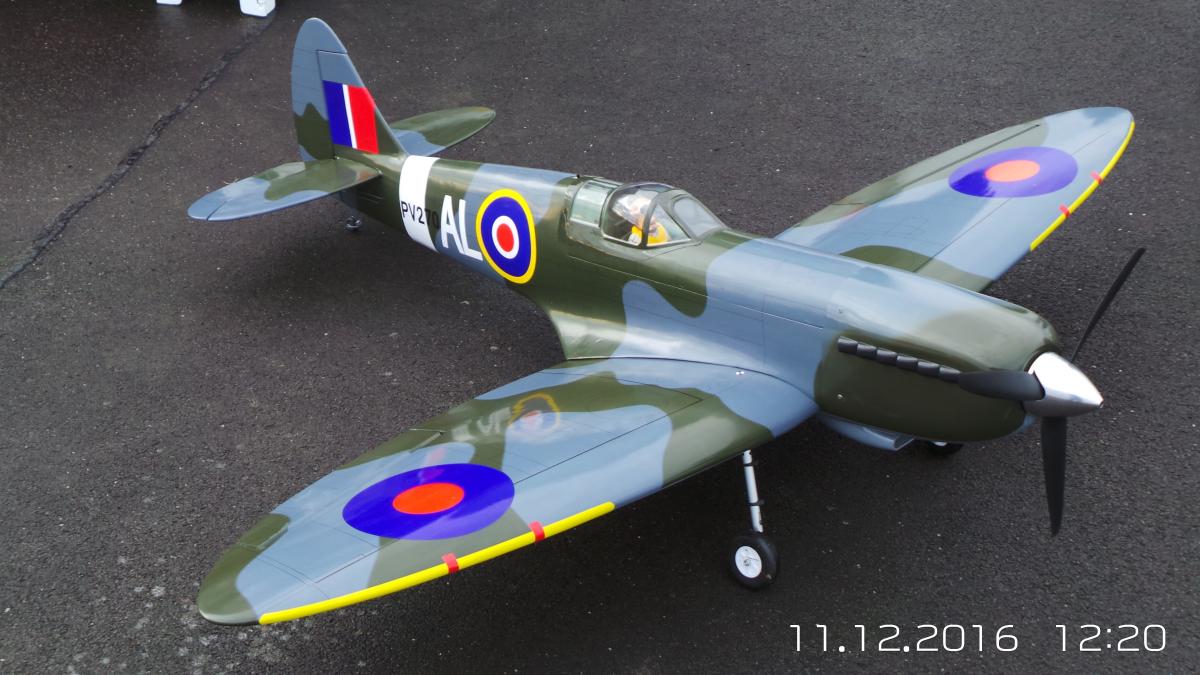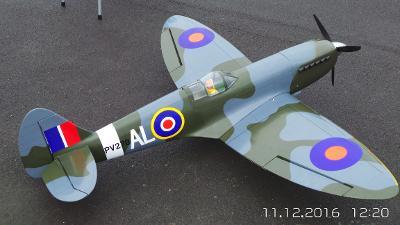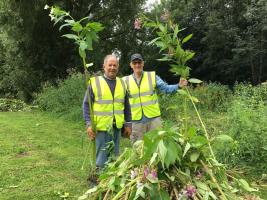Roger Brookes - The RAF Centenary and the celebration of the Spitfire
Tue, Oct 16th 2018 at 5:45 pm - 7:00 pm
Tony Coxhill welcomed four guests, including one former member-Trish Waring to the meeting.
Roger Brookes spoke on his interesting subject:-
RAF Centenary with Celebration of the Spitfire
Roger has a strong interest in scale and vintage planes, prompted from his engineering background in structures, materials, aerodynamics, electrics, control etc. He thought that a talk on the legendary Spitfire would be relevant for the RAF centenary and the local connections with this plane. The days of the single seat air superiority fighter are also now limited as piloted planes are being superceded by cheap disposable drones and missiles, so the era of the traditional RAF may be coming to an end.
He brought a working 1/6th scale model Spitfire IX to illustrate his talk. This was the most common version used from the mid war years. This electric powered model uses a 24 volt 5 amp-hour Lithium Polymer Battery to provide 6-7 minutes radio controlled flying at 50 MPH or so. It is flown from the runways at full-sized airfields such as RAF Shawbury and Sleap private airfield.
The Audience were able to name the local connections with the Spitfire. Firstly it’s Merlin engine of which 25,000 of the total 150,000 were manufactured at the shadow Rolls Royce factory in Crewe, a location chosen so as to be concealed from the Germans. The USA also produced tens of thousands under licence with improvements in manufacturing.
Secondly, its designer R J Mitchell, came from Stoke-On-Trent. He joined Supermarine near Southampton who had a small waterside operation mostly making biplane float planes for military use. Mitchell became chief designer and primary mover in the design of the winning mono-plane float planes which eventually won the Schneider Trophy in perpetuity for Great Britain. The experience with these very fast and manoeuvrable planes with high powered RR engines, enabled him to speculatively design a land based fighter plane using the evolving powerful Rolls Royce Merlin engine. He never lived to see his Spitfire (a name he did not approve of) fly and at a speed of over 100 MPH faster than any existing biplane RAF machine. A new spec was written around the Spitfire and large orders placed before the plane was even certified. Producing them was another story as it was complex and difficult build and required setting up new manufacturing processes and training.
In the meantime development continued with the Merlin engine which started at 750 HP, then certified at 1000 HP for the production Spitfires. Eventually Advanced versions went well over 2000 HP with single and two stage two speed superchargers to enable the plane to fly at full performance over to 30,000 feet which is the maximum on oxygen without a pressurised cabin. Our knowledge and technology were (and still are ?) in advance of the Germans, enabling GB to build better, smaller, lighter engines (30% smaller), better planes, plus the advanced Radar which critically gave advanced warning necessary to intercept an approaching enemy.
The audience were able to identify other Merlin engined planes such as the even faster twin engine Mosquito able to outrun any plane, also used as a precision medium bomber, and heavily armed fighter. Others Merlin users were the Lancaster bomber and the excellent long range American P51 Mustang escort fighter. The Mustang was re-engined with a Merlin replacing the Allison as an unofficial RAF test, and was so successful it was immediately adopted and the Mustang was able to escort the long range B17 and B29 bombers all the way to their targets, due to frugal Merlin engines mated with the latest laminar flow aerofoils.
The Spitfire did not “Win the War” as sometimes quoted, but certainly we would have lost it without the Spitfire in the heady days of the Battle of Britain. The Spitfire engaged and deflected the massive squadrons of German Fighters which were protecting the German Bombers, allowing the Hurricanes in large numbers to ravage the bombers. The slower Hurricane was not an air superiority fighter, but an excellent gun platform, able to take heavy punishment, available in large numbers, and downed more enemy planes. Although it went back and forward a bit, overall the Spitfire maintained an edge over German planes, with ever increasing engine power, heavier weapons, and was able to perform every role thrown at it including unarmed reconnaissance, ground attack, bombing, operation from aircraft carriers, and was the only plane to be on top right throughout the war. It’s ability to be adapted was a credit to the original design, and the engineers at Supermarine, with their support from Vickers, the later owners.
Today there are perhaps more than 50 Spitfires still flying, but it will cost you a few million pounds to own one, or just £600 to have a small one like my model. Don’t forget to get your Spitfire Haynes Manual from the Works at £6 - it is indispensable - no actually rather interesting reading about the Spitfire.
President Michael thanked Roger for an Interesting talk with its local connections, which members were able to relate to.


